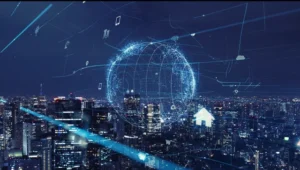When navigating the complex world of digital technologies, you often encounter various acronyms that can be confusing. Among these terms, DSP and DCP often surface, each serving distinct purposes and used in different domains. In this article, we’ll dig deep into these terms, aiming to provide a clear “Difference Between DSP and DCP Explained” kind of guide. We will explore their features, functions, and what sets them apart in their respective fields. You can also read How To Make INI File in Notepad.
Understanding DSP: Digital Signal Processor
A Digital Signal Processor, or DSP, is a specialized microprocessor engineered to handle real-time signal-processing tasks. Whether it’s audio, video, or data signals, DSP plays a vital role in managing them.
Features of DSP
- Real-time Processing: DSPs excel in high-speed calculations, facilitating real-time signal processing.
- Flexibility: Their programmable nature allows them to be used across a wide range of applications.
- Efficiency: Optimized for fast numerical computations, they are incredibly efficient.
Applications of DSP
- Consumer Electronics: Gadgets like smartphones and digital cameras often incorporate DSPs for various functionalities.
- Medical Imaging: Machines like MRIs and CT scanners make use of DSP to process complex signals.
- Telecommunications: Modulating and processing broadband signals are among its key applications.

Unveiling DCP: Digital Cinema Package
Contrary to DSP, a Digital Cinema Package, or DCP, has an entirely different function. It serves as a digital container for cinema audio, images, and data, effectively being the digital equivalent of a 35mm film reel.
Features of DCP
- High-Quality Projection: DCPs ensure high-quality, uniform playback across various digital projection systems.
- Security: The encryption possibilities make it a secure medium for content distribution.
- Standardization: Being universally accepted, DCPs ensure cross-compatibility with digital cinema projectors.
Applications of DCP
- Film Distribution: DCPs are used globally, both by major studios and independent filmmakers, for distributing movies.
- Archiving: It’s a reliable long-term storage medium for preserving films.
- Event Cinema: DCPs enable high-quality live event broadcasts to multiple locations.
Comparing DSP and DCP: What Sets Them Apart?
When understanding DSP and DCP differences, it becomes evident that they serve contrasting primary functions:
DSP:
- Real-time signal processing
- Audio and video management
- Data compression and decompression
DCP:
- High-quality audio and video playback
- Secure, standardized film distribution
- Archival of cinematic content
Understanding DSP and DCP Differences in Various Industries
DSP in Industries
- Healthcare: Utilized in medical diagnostics and treatment.
- Automotive: Anti-lock braking systems are one example of DSP applications in cars.
DCP in Industries
- Entertainment: A mainstay in modern cinema and film festivals.
- Education: Used for high-quality screenings, often for educational documentaries or academic purposes.
DSP vs DCP: Key Distinctions in Features
Both DSP and DCP hold their importance in distinct realms, and understanding the key distinctions helps us appreciate their unique roles:
- Purpose: DSP focuses on real-time signal processing, whereas DCP aims for secure, high-quality cinematic content distribution.
- Flexibility: DSPs are highly flexible, while DCPs offer rigid but secure content packaging.
- Applications: DSP finds its utility in diverse sectors like healthcare and telecommunications. Conversely, DCP is almost exclusively used in the film industry.
Costs Involved in DSP and DCP
Financial considerations vary greatly between DSP and DCP due to their differing features and applications.
DSP
- Development Costs: Investing in algorithms and computational resources can be a significant factor.
DCP
- Production Costs: High-quality content, encryption, and storage all contribute to the overall expense.

The Future of DSP and DCP
Technological advancements are constantly reshaping both DSP and DCP:
DSP:
- AI Integration: Future trends suggest DSPs will incorporate machine learning algorithms for smarter processing.
DCP:
- VR & AR: As content types evolve, DCP formats may also adapt to accommodate virtual and augmented reality experiences.
Conclusion
This article aimed to untangle the complexities surrounding DSP and DCP, emphasizing the differences that set them apart. While DSP focuses on the real-time processing of signals for various applications, DCP provides a secure and standardized method for distributing high-quality digital cinema content. By understanding these core differences, one can better appreciate the unique roles they each play in today’s digital world.


